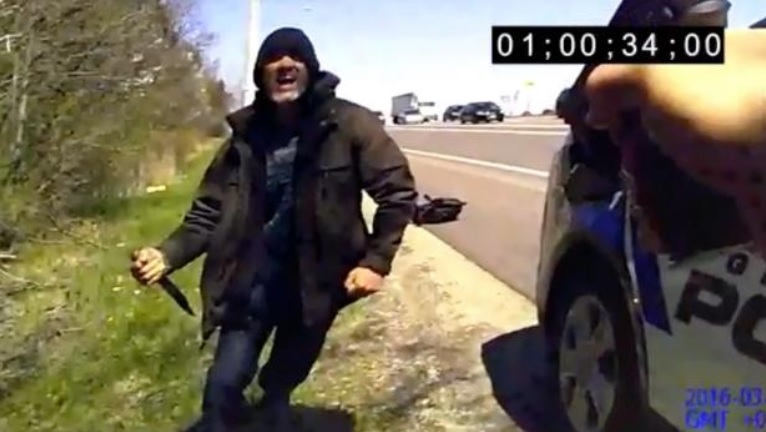
The word of the decade for law enforcement is “de-escalation”. But what does that really mean? If it means that police are expected to have a conversation with every violent offender or irate citizen until they start smiling and invite the officer in for iced tea. Sure, that can happen, but moving a person from imminent attack to complying with an arrest is dependent on innumerable factors.
A more accurate view of de-escalation is to start the definition from the level of tension at the time of the arrival of police, rather than expecting a totally peaceful outcome regardless of what the officer finds at a scene. If a suspect is displaying a weapon and the officers can do something with relative safety without using deadly force, that is successful de-escalation. That may mean that law enforcement was able to use a Taser or a bean bag, or were able to keep themselves and everyone else behind cover while communicating with the suspect.
A consideration often ignored by police critics when accusing officers of using force out of fear is that a threat of violence against a police officer is a threat that the officer might become disabled and unable to protect the public. The officer must also protect. By using persuasion or force to preserve their own life and health, an officer can prevent the threat to the public from the escape of a violent offender as well as prevent becoming a liability who needs rescue themselves. An officer protecting themselves is an officer protecting the public.
De-escalation may be accomplished with a number of tools in addition to the officer’s persuasive skills. The first responding officer may have more flexibility to negotiate if there are other officers present. In a situation where lethal force is a lawful and justifiable option, having another officer can be ready to use that force while the officer relating to the suspect can be somewhat more relaxed and not presenting their weapon as a threat to the offender.
This is a common question of civilians: “why didn’t they just Taser him?”. The answer is often that the officer is faced with a deadly force situation where failure is not an option. While Tasers are a great advance in force options, they are not intended to counter deadly assaults. Only when at least one other officer is ready with a deadly force option should a Taser be used to immobilize a person in possession of a deadly weapon. Critics must keep in mind that the Taser is useful only at relatively close distances between the aggressor and the officer. Should an aggressor decide to move in closer rapidly with a deadly weapon, or flee with a deadly weapon, the reaction time necessary for a single officer to transition from a Taser to a firearm.
Other tools at an officer’s tool belt or patrol car trunk are also tools to de-escalate violent force. When used – especially when posted by an anti-police Youtuber, edited, and provided with an inaccurate narrative – can look brutal, but are designed to bring an end to an unlawful resistance or assault. That includes a baton, chemical spray, a variety of munitions to distract and disable suspects, along with other options depending on what their agency provides. Not all of those tools are immediately accessible when time is of the essence. Many of these tools work by temporarily disabling nerve connections or muscle function and require powerful strikes to the body. Doesn’t look pleasant, probably causes pain (if the suspect can feel pain in their enraged or intoxicated state), and are hard to watch. Nevertheless, if they accomplish compliance at a lesser level than the highest force legally permissible, then de-escalation happened.
Law enforcement leaders and influencers can help the public understand use of force and de-escalation. If they don’t, the story will be told in the worst possible light.